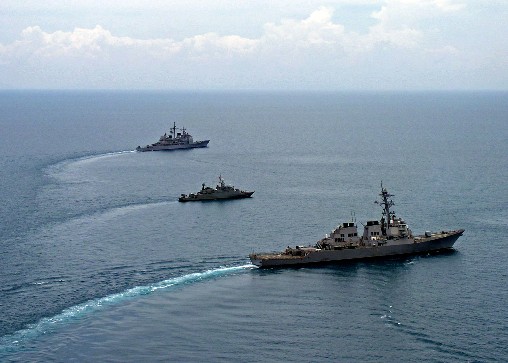
Regional-Determinism in Asia: How Everyone’s Security Could be in Jeopardy
Earlier this week, high-level American and Chinese officials met in Beijing to discuss pertinent bilateral issues including climate security, the global economy, and cybersecurity. More importantly, the two nations also discussed the growing tensions between China and Japan and other neighboring Asian countries over disputed territorial claims in the South and East China Seas.
Though these territories have been subject to debate between Japan and China in previous years, the current situation could incite an “explosive” incident. This would radically alter not only the political and economic landscape in Asia (such as rollback the economic gains that have been made since the financial crisis of 2008), but force the US ‘pivot’ to Asia to accelerate, further tying down the US and straining resources.
The likelihood of direct conflict – unless properly mitigated – could increase if the current state of affairs is not resolved through diplomatic means.
Further raising tensions in the region, Japan just reversed 70 years of pacifism engrained in their post-WWII constitution. On July 1st, Japan’s Cabinet “reinterpreted” the war-renouncing Article 9 of the constitution allowing Japan to exercise a right to collective-self defense through the use of Self-Defense-Forces in overseas battles. According to the WSJ, this reversal enables Japan to join multinational ‘peacekeeping’ operations, come to the aid of allies like the United States when or if they are attacked, and cooperate more fully with U.S. or South Korea if Japan itself is attacked.
Leading up to this change, last year Japan sought out the biggest defense budget rise in 22 years amid tensions with China over the uninhabited Diaoyu Islands in the East China Sea. More recently, the months of April and June saw Japanese jets scramble a record 340 times in response to approaching Chinese aircraft. Prime Minister Shinzo Abe has also repeatedly pressed for a collective security alliance with Australia, the Philippines, Vietnam, India and other regional allies in the Pacific.
In Abe’s most recent visit to Australia, the first of two in a span of four months, Japan’s PM said, “Japan is now working to change its legal basis for security . . . so we can act jointly with other countries in as many ways as possible.” Going on, Abe said, “Let us join together all the more in order to make vast seas from the Pacific Ocean to the Indian, and those skies, open and free.” Abe’s rhetoric is a direct address to China’s unilateral declaration in November of the Air Defense Identification Zone over the East China Sea and the maritime spats with Vietnam over a recently built Chinese oil rig off Vietnam’s coast.
Prior to Abe’s speech, China’s own President Xi Jinping articulated a new security framework for Asian affairs.
In May, Chinese President Xi Jinping set forth a new security concept with a regional emphasis at the fourth Summit of the Conference on Interaction and Confidence Building Measures in Asia (CICA), an organization consisting of 26 nations including strategic partners Russia and Iran. Since China has assumed chairmanship of CICA in 2014, they have attempted to raise the significance of the organization as one of many initiatives to place itself at the center of Asian affairs.
At the summit in Shanghai, Xi announced that there is a “common destiny” for the “Asian family” and that this destiny would be found in a regional-framework that sought security for “both individual countries and the region as a whole through dialogue and cooperation”. This speech, which noted the “need to keep pace with the changing circumstances and evolving times” – a slight objection to the status quo of the international order – directly addressed what was ‘new’ to the new security concept for Asian countries: Asian affairs were to be solved by Asian countries or more specifically, China.
In the final statements of the speech, Xi acclaimed, “It is for the people of Asia to run the affairs of Asia, solve the problems of Asia and uphold the security of Asia.” This can be seen as a rhetorical challenge to U.S. hegemony in the region.
The US ‘pivot’ to Asia announced in 2011 by the Obama Administration has undoubtedly caused hard-liners within the Chinese establishment to view such an action as a strategy of regional containment or encirclement – and for good reason. With the US increasing their military presence in the Pacific, Asian-Pacific allies have begun a crypto-arms race to counter potential Chinese expansion, leading US Pacific Command Commander Adm. Samuel Locklear to claim the Asia-Pacific, “the most militarized region in the world”.
It does not take an astute analyst of world history to know there is potential for direct conflict in the region. As a result, the US military risks involvement if China and Japan were to come to blows. Of course, this does not have to be the case. Actions can be taken today to reverse this trend of escalation and the meetings earlier this week sought to do exactly that. Nonetheless, the US should make its diplomatic and military policy in the region abundantly clear, as any ambiguity in regards to Japan’s security and China’s growing influence over neighboring countries will no longer suffice in a world where challenging the international order is becoming more common.





